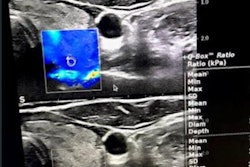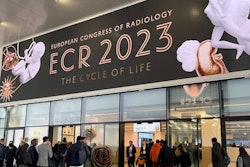Nuclear medicine physicians say the medical specialty was sidelined and marginalized when it came to contributing to new thyroid nodule management guidelines in Europe and they have warned the medical community of gaps and possible errors, according to an editorial published in the European Journal of Nuclear Medicine and Molecular Imaging.
"Several important aspects of nuclear medicine approaches were not adequately addressed in these guidelines, despite regular exchanges between the [European Association of Nuclear Medicine] EANM and the [European Thyroid Association] ETA over the past years," wrote Dr. Michael Kreissl from the division of nuclear medicine in the department of radiology and nuclear medicine at University Hospital Magdeburg in Germany and others from Croatia, Cyprus, Italy, Switzerland, and Turkey.
"What is undeniable is the marginalization of nuclear medicine and, above all, the surprising downgrading of radioiodine (and surgery) ... despite more than 80 years of successful application," they said in a scathing EANM response editorial.
At issue was scant acknowledgment of nuclear medicine diagnostics in new clinical practice guidelines for thyroid nodule management and a preference for EU's Thyroid Imaging and Reporting Data System (TIRADS) over American College of Radiology (ACR) TI-RADS for diagnostic performance, according to the EANM article.
Further, a review found that ETA's guidance was limited in its treatment of performing thyroid scans, for example, and some stipulations that were included will lead to unnecessary diagnostic procedures such as [fine-needle aspiration cytology] FNAC and surgery, Kreissl and colleagues wrote. They also suggested "neglect" in the guidelines' treatment of technetium-99m-MIBI for evaluating thyroid nodules indicating a crucial clinical value, among other concerns.
The EANM reviewers also found that ETA's guidelines only briefly mentioned the medical treatment of goiter and recommended not using iodine in replete populations, to which the reviewers countered that most nodules are found in countries with an insufficient supply of iodine. They advised including respective recommendations. In another example, they noted ETA's guidelines suggested using a drug not commercially available and that would be out of label for the treatment of nontoxic goiters, warning of the risk of severe hyperthyroidism and volume increase with compression should ETA's advice be followed.
While medical guidelines ideally involve multidisciplinary panel members reflecting on the different aspects of issues, the EANM's issues with the ETA's thyroid nodule management recommendations demonstrate how a medical specialty might be underrepresented in decision-making.
Among the acknowledgments the ETA did make in its 2023 recommendations was that nationally adapted guidelines may deviate from the ETA's positions. The authors also said the document could have benefitted from including even more specialists, for example, a nuclear medicine physician, adding that ETA did incorporate comments from nuclear medicine experts within its organization.
With the widespread use of sensitive imaging techniques, a conspicuous number of thyroid nodules emerge and demand attention, according to thyroid medical experts. However, most lesions are benign, asymptomatic, and do not warrant treatment.
"There is a pronounced need for more cost-effective, risk-adapted approaches to the management of this highly prevalent condition, taking the wishes of the patient into consideration," wrote Dr. Cosimo Durante of Sapienza University in Italy and colleagues for the ETA's thyroid nodule management report. Importantly, the guidelines were not intended to cover management of thyroid malignancy. Durante, who works in translational and precision medicine, is also involved in an international workgroup to develop a new International TIRADS (I-TIRADS) for the global thyroid community.





















